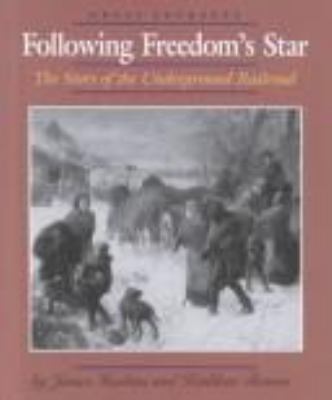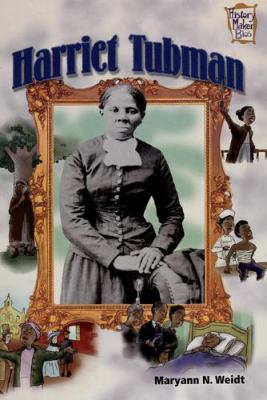-
-
c1993, Juvenile, Clarion Books Call No: B Availability:1 of 1 At Location(s) Summary Note: Combines an account of Robert Louis Stevenson's experiences as he traveled from New York to California by train in 1879 and a description of the building and operation of railroads in nineteenth-century America.
-
-
c1993., Clarion Books Call No: B Availability:1 of 1 At Location(s) Summary Note: Combines an account of Robert Louis Stevenson's experiences as he traveled from New York to California by train in 1879 and a description of the building and operation of railroads in nineteenth-century America.
-
-
[1993]., Juvenile, Clarion Books Call No: B STE Availability:1 of 1 At Location(s) Summary Note: Combines an account of Robert Louis Stevenson's experiences as he traveled from New York to California by train in 1879 and a description of the building and operation of railroads in nineteenth-century America.
-
-
c1993., Juvenile, Carolrhoda Books Call No: 973.7 115 Availability:1 of 1 At Location(s) Summary Note: Recounts how Allen Jay, a young Quaker boy living in Ohio during the 1840s, helped a fleeing slave escape his master and make it to freedom through the Underground Railroad.
-
-
c1999., Primary, Rourke Corp. Call No: ENF 385 STO Availability:1 of 1 At Location(s) Series Title: TrainsSummary Note: Surveys the history and uses of American railroads, how they work, the different kinds, and the current state of the industry.
-
-
Capstone Press Call No: 973.7 LAS Availability:1 of 1 At Location(s) Summary Note: Describes the events surrounding the Civil War. The readers choices provide different historical perspectives.
-
-
-- Underground Railroad adventures of Callie and Williamc2004., Pre-adolescent, National Geographic Call No: 973.7 115 Availability:1 of 1 At Location(s) Series Title: I am AmericanSummary Note: An account of two slaves who escaped from their masters in Kentucky and, aided by the people of the Underground Railroad, made their way to freedom in Canada.
-
-
c2002, Benchmark Books Call No: 973.7 115 Availability:1 of 1 At Location(s)Table of contents Series Title: Great journeys
-
-
By Chiu, Davidc2006., Juvenile, Rosen Pub. Group. Call No: 385 .0973 09041 Edition: 1st ed. Availability:1 of 1 At Location(s)Table of Contents
-
-
c2003., Juvenile, Barnes & Noble Books Call No: B TUB Availability:1 of 1 At Location(s) Series Title: History maker bios.
-
-
2015., Candlewick Press Call No: 385.0973 Availability:1 of 1 At Location(s) Summary Note: Just after Gold Fever swept the West - a time when people walked, sailed, or rode horses for months on end to seek their fortune - the question of faster, safer, more reliable transportation between America's East and West Coasts was posed by lawmakers and national leaders. But with 1800 miles of seemingly impenetrable mountains, searing deserts, and endless plains between the Missouri River and San Francisco, could a transcontinental railroad be built?.
-
-
By Floca, Brian[2013], Juvenile, Atheneum Books for Young Readers Call No: 385.0973 Availability:1 of 1 At Location(s) Summary Note: Here are the locomotives, the iron horses, the great machines, pulling their trains behind them. Here are the crews that make them run, and here is how they do it.
-
-
By Floca, Brian[2013], Juvenile, Atheneum Books for Young Readers Call No: 385.0973 Availability:1 of 1 At Location(s) Summary Note: Here are the locomotives, the iron horses, the great machines, pulling their trains behind them. Here are the crews that make them run, and here is how they do it.
-
-
By Floca, Brian[2013], Atheneum Books for Young Readers Call No: 385 .0973 Edition: 1st ed. Availability:1 of 1 At Location(s) Summary Note: Details what the first passengers experienced as they traveled West on the transcontinental railroad in the summer of 1869.
-
-
2004., Rosen Central Primary Source Call No: 338.6 Jar Edition: 1st ed. Availability:1 of 1 At Location(s) Series Title: America's industrial society in the 19th centurySummary Note: Chronicles the development of railroads, steel, and oil as moneymakers in nineteenth-century America, describing their impact on labor practices and everyday life in the U.S.
-
-
[2004], Pre-adolescent, National Geographic Call No: 385 .0978 Availability:1 of 1 At Location(s)Table of contents Series Title: Crossroads AmericaSummary Note: Presents the story of the transcontinental railroad and those who built it including both Irish and Chinese immigrants and former slaves.
-
-
c1979., Holiday House Call No: 385 .0973 Availability:1 of 1 At Location(s) Series Title: Nineteenth century AmericaSummary Note: Traces the growth of the railroads during the 19th century.
-
-
By Shields, Amyc2011., National Geographic Call No: TRAINS 625.1 SHI Availability:1 of 1 At Location(s) Series Title: National geographic readers. Level 1Summary Note: Describes different types of trains, their parts, the history of building railroad systems within the United States, and the future of trains.
-
-
2022., Pre-adolescent, First Second Call No: GN 385 HIR Edition: First edition. Availability:1 of 1 At Location(s) Series Title: History comics (First Second (Firm))Summary Note: "In 1863, America is divided not just by the civil war but by months of travel over thousands of miles. Two railroad companies, one each from East and West, are given the task of connecting the nation by rail. Building this railroad will be a monumental undertaking, difficult and dangerous. The work falls to immigrant laborers from the lowest economic classes. They accomplish astounding feats of engineering while waiting for an answer: Will those who connect the country be accepted into it?"--Provided by the publisher.
-
-
2018., Cavendish Square Call No: 385.0978 09034 Availability:1 of 1 At Location(s) Series Title: Primary sources of westward expansion.Summary Note: People today refer to the Midwestern and prairie states as flyover country. During the Civil War, crossing those areas was the biggest obstacle in uniting the East and West Coasts of our divided nation. An act of Congress in 1862 authorized the Central Pacific and the Union Pacific railroad companies to build a railroad that would link the coasts. Seven years later, on May 10, 1869, an overwhelmingly immigrant labor force completed the task when a rail line was join in Promontory, Utah. The states had become united at last.





















